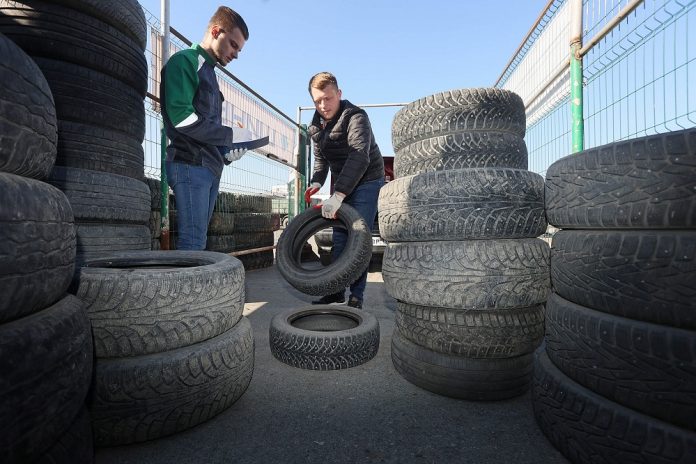Rising inflation and worsening economic situation in Eastern Europe reincarnated an old problem of illegal tyre disposal at unregistered dumps or deep in the forest in Latvia.
Since the beginning of 2022, the Latvian State Environmental Service registered 16% more complaints about improper used tyre disposal than during the same period of the previous year.
An investigation conducted by a Riga-based news outlet LSM discovered that some popular places for dumping tyres are located right in the Latvian capital. In 2019, an illegal tyre dump caught fire in the South Bridge area in Riga. Once the fire was eliminated, the regional authorities cleared up the place. However, a few years down the line, the dump is out there again.
Vita Jaunzeme, head of the environment-protecting initiative Big Cleanup, who fights against illegal tyre dumps, among other things, admitted that the problem has tended to deteriorate in the recent years.
“What we witnessed in the 2000s is coming back on us. Probably due to the economic situation, people are starting again taking tyres out to the forest,” Jaunzeme said, explaining that fitting centres accepted used tyres from car owners for free in the past. However, this is not the case any longer.
Elmar Yasinsky, a spokesperson for the Latvian State Environmental Service, said that some municipalities plan to combat illegal dumps by installing CCTV in the areas known to be popular for tyre dumping. However, it is understood that this step alone would not solve the problem that is gaining pace.
Mounting volumes
According to the Latvian Association of Tyre Recyclers, nearly 105,000 tonnes of rubber was not properly recycled in the country in the previous year, not taking used tyres at illegal dumps into account. The environmentalists said that the tyre collecting and recycling industry in Latvia is in bad health, with most tyre recycling plants in the country are currently out of service.
In 2019, ECO Baltija Vide launched one of the largest tyre recycling plants in the country, with a production performance of 6,000 tonnes of used tyres per year. Janis Aizbalts, chairman of the board of Eco Baltia Vide, said that the plant eventually suspended operation due to the lack of tyres.
“Rubber recycling in Latvia comes at a surcharge. This means that someone has to pay us for recycling rubber. When there is not enough of those ready to pay, the demand is not sufficient,” Aizbalts said, adding that in the past, some tyre collecting companies accepted four tyres per person per year for free. However, this system ceased to exist some time ago.
A few years ago, the country’s only tyre recycling plant running a pyrolysis line converting used tyres into fuel suspended operation. The company failed to obtain the necessary certificates to sell its products to final customers.
“They had to undergo a certification process so that someone would buy this fuel from them. At first, they predicted success. Unfortunately, they did not make it through the process. In addition, they produced something there was no demand for on the market,” explained Rudite Vesere, representative of the Ministry of Environment and Regional Development.
A typical problem
Aizbalts said that some tyres from Latvia and Estonia are currently supplied for recycling to neighbouring Lithuania. However, out of 20,000 to 25,000 used tyres annually generated in the country, only 10,000 to 12,000 tonnes are correctly disposed. Aizbalts pointed out that the rest of the tyres are out of the system, adding there is a lack of control over tyres sold through online stores or used tyres imported from Scandinavia.
The Lithuanian Environmental Ministry is currently working on a set of amendments to the laws “On the tax on natural resources” and “On waste disposal”. Under the new rules expected to come into force from January 2023, all tyres entering the country will be subject to a disposal fee. On the other hand, the Ministry so far has no understanding of how to solve the problem of used tyres already accumulated in the country.
Latvian environmentalists believed that at least 100,000 tonnes of used tyres could lay across the country at illegal dumps, in forests and at the bottom of rivers, though the exact figure remains unknown.
The problem of illegal tyre dumps remains typical for some countries of Eastern Europe. During a recent environmental campaign, a group of Polish environmentalists collected nearly 12,000 used tyres across the country, most of which were found on the roadsides and in the forecasts. Although the campaign turned out to be successful, the ecologists have no doubts that the actual number of used tyres across the country is much higher.


















